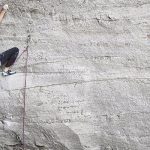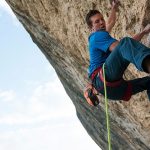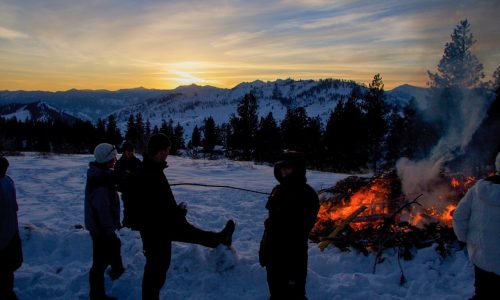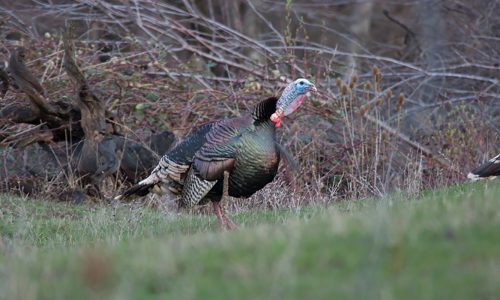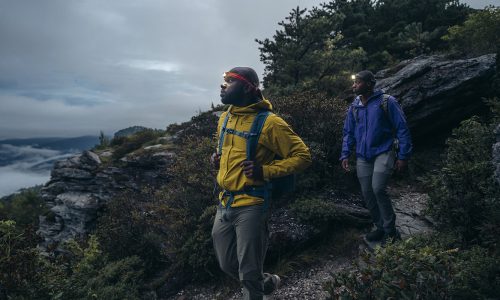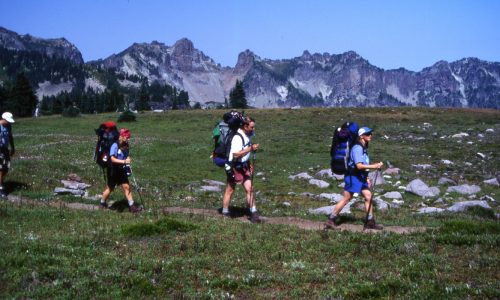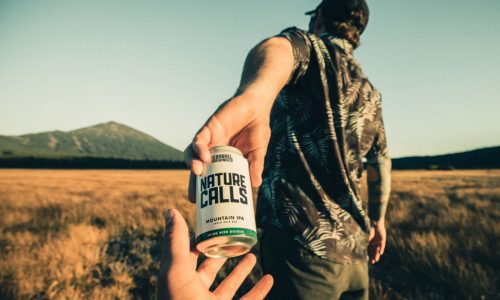Home » Gear Reviews » Climbing » Climbing Shoes » Five Ten Stonelands VCS
Five Ten Stonelands VCS Review
March 16, 2013
 78
78 The Good
- Very comfortable fit
- Super-sticky Stealth C4 rubber; killer smearing
- Reduced heel-cuff pinching with wide or swollen feet
- Fierce outside edging/drop-knee accuracy
- Good blend of performance and comfort
The Bad
- Flat last is perhaps a hair too flat—a mild downcamber or downturn would help with steeper terrain
- Last can become somewhat amorphous after break-in, the downside of comfort
- Soft shoe—toebox tended to buck up, especially on small edges
This is a soft, lightweight, comfortable, all-around shoe with a minimalist look and few bells and whistles, but it has some welcome high-performance attributes—including excellent smearing (sticky rubber and a wide toebox) and incredibly stable outside edging. The last is flat and the profile slim, making the Stonelands VCS best for slab-to-vertical crack-and-face terrain, such as the granite flares and hybrid face climbs of Joshua Tree. The broad last and overall softness mean the shoe tends to deform—buck up at the toebox—over time, especially when edging.
The Stonelands VCS is one in a line of three intriguing new shoes from Five Ten for 2013, in which they’ve reversed the traditional “lace-ups must be rigid, slippers must be soft” paradigm by making the slippers the most rigid shoe and the lace-ups the softest. The reasoning, as Five Ten’s president Charles Cole explains in this video, is that you actually want greater intrinsic stiffness in the slipper so it won’t roll on your foot. For a soft lace-up, you can easily snug it to prevent rolling thanks to the laces’ greater control.
It’s an interesting concept and could spell a new direction in shoe design. Stiffness-wise, the double-Velcro-closure Stonelands VCS lands somewhere between the two other shoes in this line.
Smearing and sticking
I tested the VCS on plastic (all angles), Boulder Canyon granite, and overhanging Flatirons sandstone. The first thing I noticed was that they were smearing/crack-jamming/crack-smedging machines, right out of the box.
This is rare for new boots; often the rubber needs to be worn down or scuffed to stick to smears, or the uppers and midsole need to break in so you don’t have slippery “brick foot.” With a stated goal, then, of instant comfort mated with solid intermediate-advanced performance, Five Ten has nailed it.
I think these shoes would be money in granite venues like Joshua Tree or the South Platte, where you want friction-adhesion plus comfort for standing and fishing in protection on the crack, face, and crack-face lines.
Much of this insta-comfort derives from the line’s new minimalist “Firsten Last,” designed to keep your feet flat or only slightly curl the toes (size tightly if you want any downturn effect). The downside to this flat last, however, is that you can’t grab as well as with other performance all-around shoes (e.g, La Sportiva’s Katana or Evolv’s Geshido SC, so the VCS has a blind spot beyond roughly 20 degrees overhanging. It’s not that they don’t work on the epic steeps, only that they don’t work as well as other similar boots.
Edging and bucking
It took me awhile to acclimate to the unique way in which the VCS edges, but once I did, I began to appreciate their nuanced performance: reliably stiff so as to be accessible to beginning or intermediate climbers, but softer than average for advanced climbers, requiring a slightly different “toe-forward” approach.
By “toe-forward,” I mean that the shoes have a broad, rounded, highly asymmetrical toebox that almost “extends” your big toe with an extra nib of rubber; it’s accurate on even the littlest footholds when you take the bevel into account, but potentially frustrating if you’re used to a more traditional, more symmetric or pointed shape.
This shoe has a unique last—a 90-degree arc along the pinky-toe side that meets that abrupt nib at the big toe almost at a right angle. The upshot of the design is elite-level outside edging, for backsteps, step-throughs, and drop-knees; it feels almost like you’re standing on a little shelf, the shoes are so stable.
Where things tend to fall apart is in frontal edging or micro-dime smedging: being so soft and broad across the toe, with only a minor midsole stiffener, they tend to buck up (bend backward) under extreme pressure, especially after break-in. You can easily bend the shoes back down once they’re off your feet to re-form them, but the next edging route might buck them up again.
Heel and closure
The double-Velcro closure seemed solid: plenty of play in the straps, which were oriented usefully high and low over the cushy split, padded tongue. A final unique feature is what Five Ten calls their Western Heel Cup, a fairly radically upsloped narrow heel cup separated from the bulk of the footbed by a deep, swooshing U shape and anchored with a tension rand.
I liked these heels—snug yet comfortable, easy on, easy off, and the U shape reduced pinching in the cuff, a common lament when your feet have swollen in the heat or after a days’ worth of pitches, especially with stiffer shoes.










